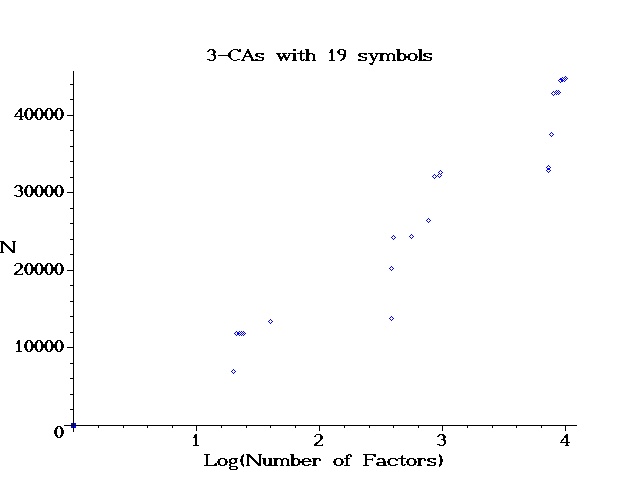| k | N | Source |
| 20 | 6859 | orthogonal array |
| 21 | 11791 | orthogonal array fuse fuse fuse fuse postop NCK |
| 22 | 11823 | orthogonal array fuse fuse fuse fuse postop NCK |
| 23 | 11847 | orthogonal array fuse fuse fuse fuse postop NCK |
| 24 | 11869 | orthogonal array fuse fuse fuse fuse postop NCK |
| 40 | 13357 | Chateauneuf-Kreher doubling |
| 381 | 13717 | Raaphorst-Moura-Stevens |
| 382 | 20215 | Add a factor |
| 400 | 24156 | Cohen-Colbourn-Ling |
| 553 | 24325 | Raaphorst-Moura-Stevens fuse fuse fuse fuse |
| 762 | 26371 | Chateauneuf-Kreher doubling |
| 855 | 32095 | Colbourn-Martirosyan-TVT-Walker |
| 941 | 32202 | Cohen-Colbourn-Ling |
| 957 | 32544 | Cohen-Colbourn-Ling |
| 7239 | 32869 | Colbourn-Martirosyan-TVT-Walker |
| 7240 | 33210 | Cohen-Colbourn-Ling |
| 7620 | 37494 | Cohen-Colbourn-Ling |
| 7962 | 42746 | Cohen-Colbourn-Ling |
| 8323 | 42878 | Cohen-Colbourn-Ling |
| 8684 | 42900 | Cohen-Colbourn-Ling |
| 9045 | 44460 | Cohen-Colbourn-Ling |
| 9406 | 44532 | Cohen-Colbourn-Ling |
| 9767 | 44640 | Cohen-Colbourn-Ling |
| 10000 | 44712 | Cohen-Colbourn-Ling |
